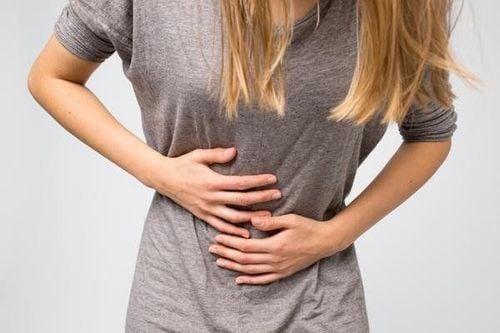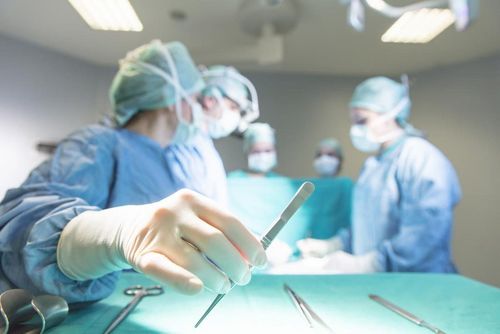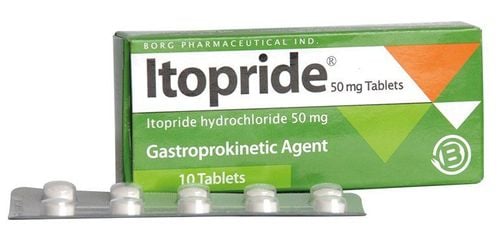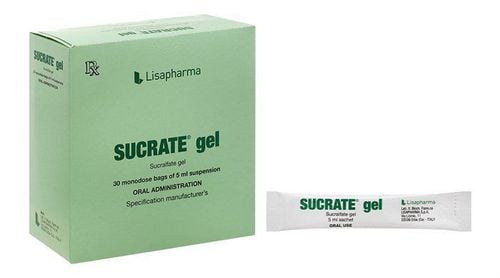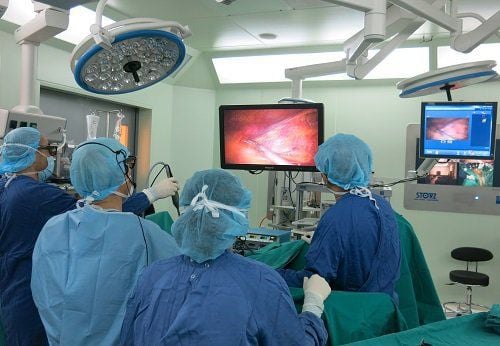This is an automatically translated article.
The article is professionally consulted by Master, Doctor Vu Huu Thang - Emergency Resuscitation Doctor - Emergency Resuscitation Department - Vinmec Ha Long International General Hospital. The doctor has nearly 10 years of experience in Emergency Resuscitation.Esophageal burns in children are common injuries because children often mistakenly drink chemicals such as detergents, caustic soda, ash water, etc. Treatment of esophageal burns in children needs to be detected early and treated acutely. timely treatment, then, depending on the extent of the damage, the appropriate regimen will be treated.
1. What is esophageal burns in children?
Esophageal burn is a common esophageal injury in children caused by ingestion of chemicals that cause burns and erosions of the esophagus, such as Javen cleaners, vinegar, acids used in the manufacture of batteries, accumulators or bases used in products. export ash cake, noodles, ....2. Symptoms of esophageal burns in children
Symptoms of esophageal burns in children manifest in 3 stages:Stage 1: Acute (lasting 5-6 days): The first symptom after the child drinks the wrong substance is burning, hot, blistering in the mouth. lips, mouth, tongue and throat. Burning in the mouth makes the child unable to eat or drink. In addition, the child may also have a fever and white patches called pseudomembranous membranes on the mouth, lips, and tongue. Stage 2: End of pseudo-disease (lasts 7-8 days): When the white patches on the mouth and tongue peel off, the symptoms of burning and burning are reduced, the child feels more comfortable and can eat, because at this time the wound Esophageal burns begin to scar and cause narrowing of the esophagus. This stage is often mistaken as being cured because the child is healthier and able to eat and drink. Stage 3: Scars narrow the esophagus: When scars form, it will cause children to choke, making it difficult to eat from hard foods such as rice, to porridge and finally milk, because the scars completely narrow the esophagus. whole esophagus. When the child can no longer eat and drink, the child's body begins to deteriorate, fatigue due to constant hunger and thirst, leading to weight loss and possibly death.
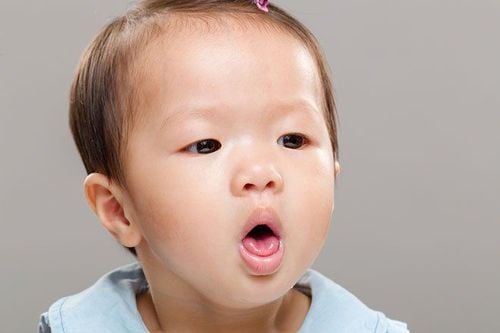
3. Treatment protocol for esophageal burns in children
Treatment of esophageal burns in children is based on the following principles:Healing of the lining of the esophagus. Cure and prevent scarring that narrows the esophagus. Ensure nutrition for children during treatment. 3.1. Initial management in the treatment of esophageal burns in children First, first aid and CPR should be performed in order.
Determine the substance the child has taken by asking the patient. Comprehensive child examination. If endoscopy is required, give the child water or milk to neutralize some of the substance that caused the burn. Laryngoscopy to check for esophageal burns with associated laryngeal injury. If esophageal perforation is suspected, a chest x-ray is indicated. In case of esophageal burns caused by swallowing an electronic battery, the child should be anesthetized to remove the battery immediately, and at the same time monitor for poisoning caused by the battery such as heavy metal poisoning, perforation of the esophagus. In case the child is accompanied by symptoms such as impaired consciousness, shock, acid-base disorder, perforation of the stomach and esophagus, it is necessary to consult with other specialties (resuscitation department, surgery) for timely intervention. . Note, in the initial steps of treating esophageal burns in children, acid should not be used to neutralize the base or use a base to neutralize the acid, and activated charcoal should not be used to wash the child's stomach because it may cause the child to die. vomiting.
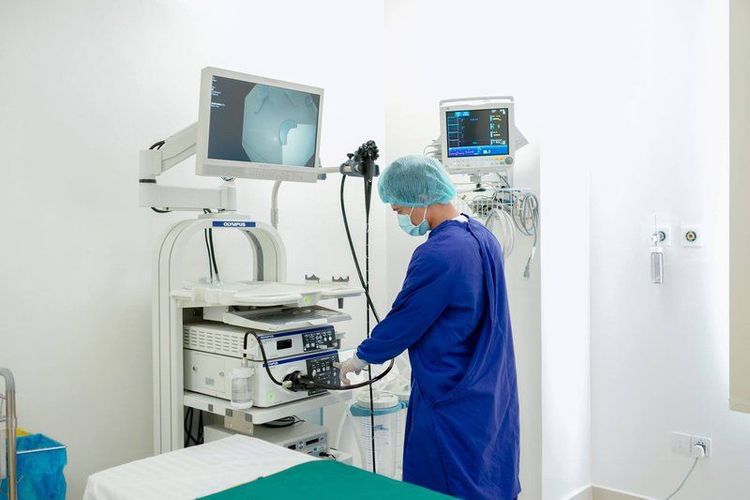
Endoscopy allows assessment of damage to the esophagus according to the following 3 levels:
Grade 1: The esophagus is not ulcerated, edematous, but the esophageal mucosa is slightly congested. Grade 2: The esophagus is edematous, with exudates and mucosal ulcers, but has not burned down to the muscle layer and exposed the muscle. Grade 3: The esophageal tissue is severely damaged, purple-black, deep esophageal ulceration, exposed muscle adjacent to the esophagus and esophageal perforation. 3.3. Treatment protocol for esophageal burns in children After endoscopy, depending on the extent of damage, children with esophageal burns will be treated according to the appropriate regimen.
Grade 1: The child is admitted to the hospital for vital monitoring within 24-48 hours. Tape the esophageal mucosa, use Phosphalugel to neutralize the burning substance. If the baby's vital signs are stable after 2 days of treatment, the child can be discharged from the hospital and 2 weeks after the re-examination, an X-ray of the esophagus is taken to check.
2 : Endoscopy of the esophagus to place the tube from the nose to the stomach (set the largest tube possible or place 2 small tubes). The child can be fed with both oral tubes at the same time.
Treatment of esophageal burns in children with corticosteroids to combat inflammation. Slow intravenous injection of a single dose of Dexamethasone 1mg/kg, then give the child orally Prednisone 1mg/kg/day, or Prednisone can also be used from the beginning and used for 2 weeks. In case of esophageal perforation or gastric perforation, corticosteroids should not be used. Antibiotic treatment with intravenous ampicillin 100mg/kg/day/4 hours/time for 2 weeks. If you are allergic to Ampicillin, use Clindamycin 15mg/kg/day/4 hours. In case after using Ampicillin, there is no response, switch to Cefotaxime. Prevention of gastric acid reflux in the treatment of esophageal burns by using H2 antagonists and H+ proton pump inhibitors. Using Phosphalugel should be careful not to damage the lining of the esophagus, use acid-neutralizing drugs to bandage the stomach. After 5 days of treatment, if the child is stable, he can be discharged from the hospital, but still need to check the nutrition for the child because the child is still eating with a tube at home. After 3 weeks, bring the child back to the clinic for an X-ray of the esophagus. If there are no signs of esophageal stricture, the nasogastric tube can be removed. In case the child shows signs of choking after a follow-up examination one week, an X-ray of the esophagus will be taken again to check for esophageal burns, scar formation, narrowing of the esophagus, and treatment for esophageal dilation. Grade 3: Esophageal endoscopy and nasogastric tube placement, and at the same time coordinate with the resuscitation department to intervene. In case of third degree esophageal burn, corticosteroids are contraindicated and still be treated with antibiotics such as grade 2, anti-reflux and esophageal mucosal dressings. When the scar from the burn stops shrinking (it can take 3 to 6 months or 1 year), the nasogastric tube is removed. If the child shows signs of choking when the tube is removed, it should be treated for esophagitis.
3.4. Esophageal dilation in the treatment of esophageal burns in children Esophageal dilation is performed when there is evidence that the child has esophageal stricture. The number of times to conduct esophagectomy is as follows:
First 15 days after esophageal burn: 2 times/week. Next 15 - 30 days: 1 time/week. 2 - 6 months: every 2 weeks. 6 months - 1 year: 1 month/time. If esophagectomy is not effective, surgical intervention is required. Children will be surgically esophagectomy, to avoid excessive dilatation that ruptures the esophagus, leading to mediastinitis and possibly death.
3.5. Monitoring and re-examination after treatment of esophageal burns in children After treatment of esophageal burns in children, it is necessary to monitor the child's ability to swallow and eat solid foods, as well as the child's weight gain index. Re-examination schedule as follows:
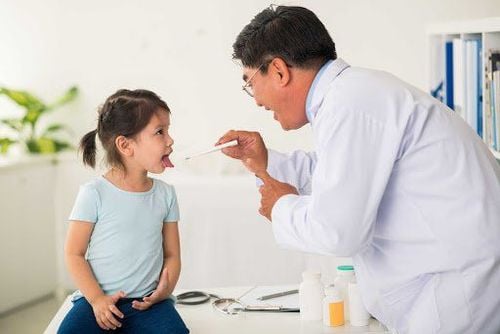
Please dial HOTLINE for more information or register for an appointment HERE. Download MyVinmec app to make appointments faster and to manage your bookings easily.





